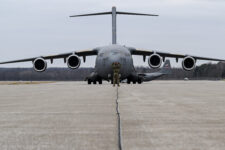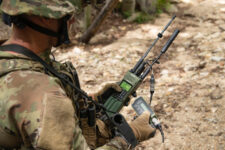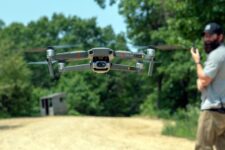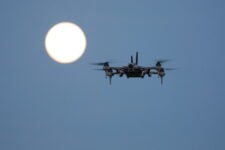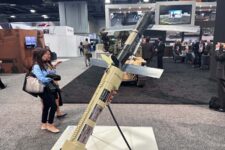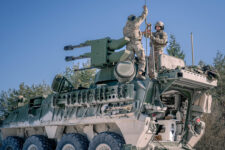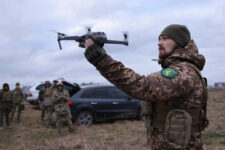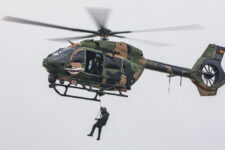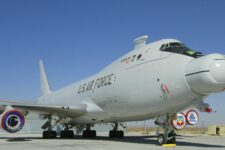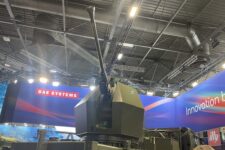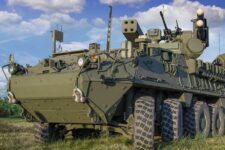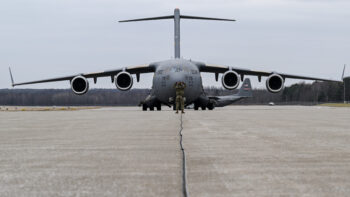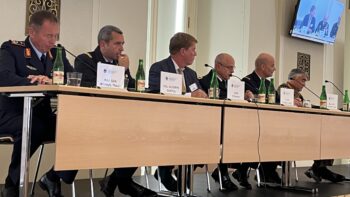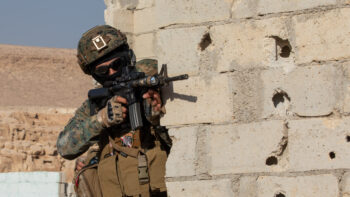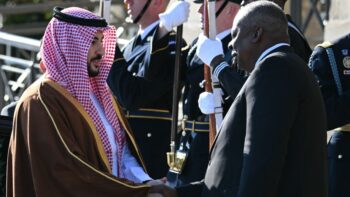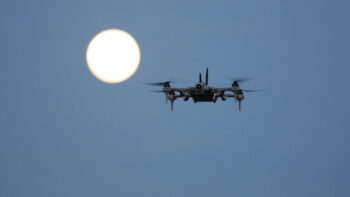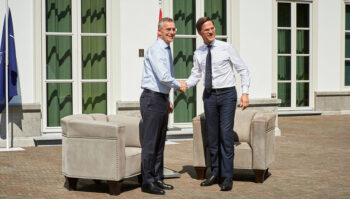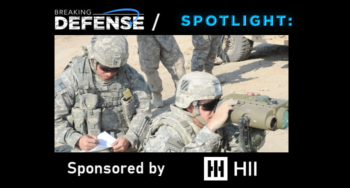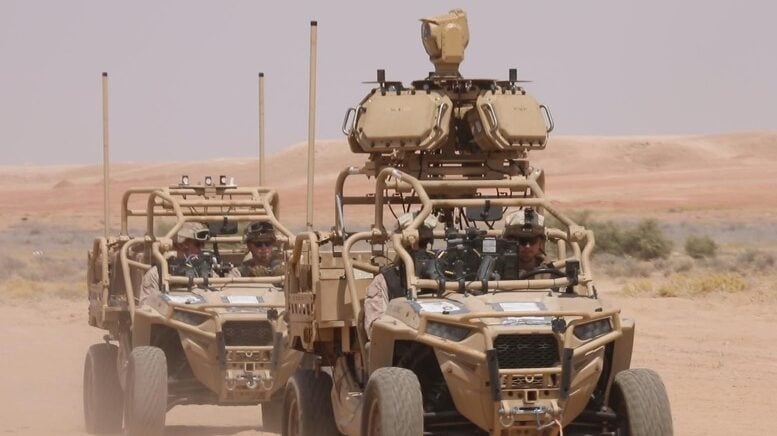
The Red Sands exercise had a special focus on unmanned and counter-unmanned systems. (US Army)
WASHINGTON — The US and Saudi Arabia just wrapped up the second iteration of a counter-unmanned aerial system (c-UAS) exercise showcasing how different emerging and already-fielded technologies from both nations could defeat threats posed by adversaries.
“Our objective during this live fire exercise was to shoot down UAS from dawn to dusk,” Col. Robert McVey, director of the Red Sands Integrated Experimentation Center, told Breaking Defense today. McVey called the exercise, officially Red Sands Live Fire Exercise 23.2, the “biggest, most complex counter-UAS live fire exercise” conducted in the region.
“And when I’m talking about being more complex, that complexity comes from the greatly increased scale of the number of participants, the number and type of counter UAS systems employed, the number and type of UAS targets engaged and then the much more challenging enemy US tactics, techniques and procedures-based scenarios that we were able to employ during this exercise,” he said.
Three goals were outlined for the exercise, which was conducted Sept. 8-12 at the Shamal-2 Range in Saudi Arabia: strengthening military relations between the US and Saudi Arabia, experimenting with cutting-edge technologies, and developing procedures to defeat UAS threats while increasing the combat readiness of the two nations against emerging UAS threats, McVey said.
The effort involved c-UAS systems from Royal Saudi Air Defense partners, Army Combat Capabilities Development Command and Army Central’s innovation-focused Task Force 39, which also brought over what McVey dubbed “two other great capabilities.”
During the first exercise, Red Sands 23.1 which was conducted back in March, Task Force 39 demonstrated a smartphone application called CARPE Dronvm, an app “that uses crowd-sourced information to detect unmanned aerial systems,” according to the Army. CARPE Dronvm was used during this month’s exercise by senior US and Saudi military and civilian leaders against live UAS targets, McVey said.
“And then the second kind of emerging technology that US Army Central’s Task Force 39 demonstrated during the [exercise] was…after our counter UAS systems engaged the targets, our Task Force 39 team was able to demonstrate the autonomous transport vehicle system,” McVey said. “And this system was used to conduct…ammunition resupply of our ground-based counter UAS systems.
“So it’s an autonomous vehicle that we look forward to continuing to employ in our series of Red Sands live fire exercises, as well as US Army Central looks to employ the autonomous transport vehicle system operationally throughout the CENTCOM area of responsibility,” he continued.
McVey added that for the past 16 months, the US has been working closely with its Saudi partners to develop “air-to-air c-UAS tactics, techniques and procedures.” In one scenario during the exercise, the TTPs involved the use of a Royal Saudi Air Force F-15 and US Army Central AH-64 Apache attack helicopters to defeat UASs.
“So, you can imagine the complexity of doing that in the air and then being commanded and controlled on the ground by the US Air Force Central Joint Terminal Attack Controller standing side by side with a royal Saudi Air Force JTAC to command and control those US and Saudi aircraft — both fixed wing and rotary wing — engaging UAS on the range,” he said.
In a press release today, Gen. Michael Kurilla, commander of CENTCOM, said that “the UAS threat is real, and the Red Sands Integrated Experimentation Center represents a significant step, not only in defeating UAS threats, but in demonstrating a shared commitment to regional security by both Saudi and U.S. forces.”
McVey said the next exercise is currently being planned for the spring and other regional partners could be involved in the future.
“As we work closely with our Saudi partners at the Red Sands Integrated Experimentation Center, this not only demonstrates a shared commitment to regional security, but it also allows us to move more quickly, innovate and innovate more effective material or non material solutions to the emerging global UAS threat.”
Air Force mobility fleet seeks on-board defenses against small drones
Air Mobility Command documents say they’re interested counter-drone systems, including platforms that can operate near friendly aircraft, so as not to hypothetically accidentally jam or spoof a nearby vice president’s plane.
